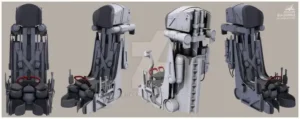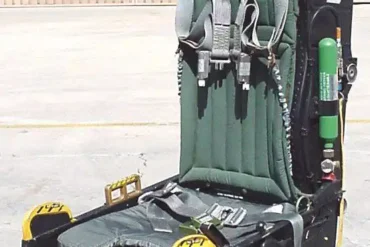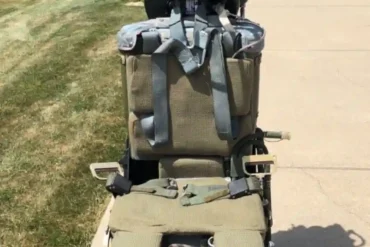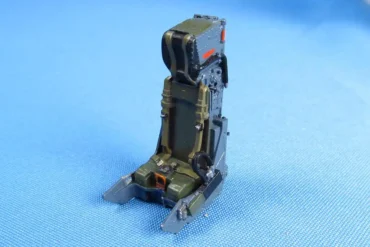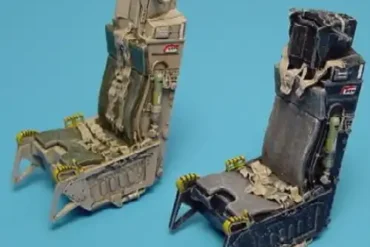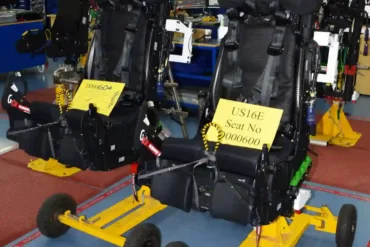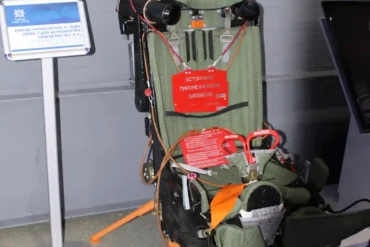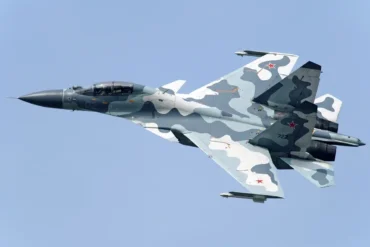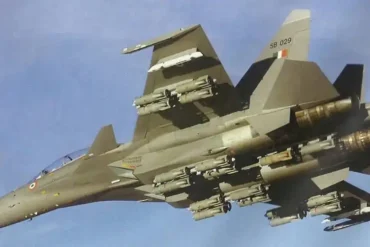The Su-30MKI, a flagship fighter aircraft of the Indian Air Force (IAF), is renowned for its capabilities in air-to-air and air-to-ground combat. However, even the most advanced aircraft are vulnerable to emergencies. When the unexpected occurs, the ejection seat becomes a pilot’s last line of defense. In this article, we delve into the Su-30MKI’s ejection seat, exploring its intricate technology, functionality, and the pivotal role it plays in ensuring pilot safety during life-threatening situations.
In the realm of military aviation, safety is paramount. The ejection seat is one of the most critical components of an aircraft’s safety system, designed to propel pilots out of the cockpit in moments of peril. The Su-30MKI, a fourth-generation fighter aircraft, is equipped with the NPP Zvezda K-36DM ejection seat, a sophisticated system engineered for emergencies.
An ejection seat operates on the principle of forceful propulsion, launching the pilot out of the aircraft’s canopy when a malfunction, damage, or hostile action threatens the crew’s survival. Given the high-stakes nature of fighter jet operations, this system is essential for ensuring that pilots have a chance at survival, even in extreme conditions.
The Technology Behind the Su-30MKI Ejection Seat
The ejection seat installed in the Su-30MKI is part of the K-36 series manufactured by NPP Zvezda, a Russian company known for developing advanced ejection systems. The K-36DM variant, used in the Su-30MKI, is equipped with zero-zero capability, a feature that allows pilots to safely eject at zero altitude and zero speed.
This zero-zero capability is particularly important because it ensures the pilot can eject from the aircraft in a low-speed, low-altitude scenario, such as during a failed takeoff or an emergency landing. In such cases, the pilot might not have sufficient altitude or speed for a conventional ejection, which is why the K-36DM system was designed to function under these specific, life-threatening conditions.
How the Su-30MKI Ejection System Works
The ejection system is an elaborate setup composed of various components working in harmony to ensure the pilot’s safety. Key elements include:
1. Ejection Seat Rocket Mechanism
The heart of the system, the ejection rocket, propels the seat out of the cockpit and away from the aircraft. This mechanism is activated in response to a trigger, typically initiated by the pilot or in automatic mode when the aircraft’s systems detect catastrophic failure.
2. Canopy Jettisoning Mechanism
Before the seat is ejected, the aircraft’s canopy (the protective cover over the cockpit) is jettisoned to clear the way for the ejection. This is achieved through a pyrotechnic charge that blasts the canopy off, allowing the seat to exit without obstruction.
3. The Parachute System
Once the seat has been ejected, a parachute system is deployed, which slows the descent of the pilot and ensures a safe landing. The system is engineered to open almost immediately after ejection to prevent injury during freefall.
4. The Ejection Angle
The angle of ejection is a critical factor in the Su-30MKI’s ejection system. The seat is ejected at an angle perpendicular to the aircraft’s trajectory to prevent the pilot from being struck by the aircraft’s fuselage or tail. This precise ejection trajectory is essential for the survival of the crew.
5. The Emergency Headrest System
The headrest rescue system is another significant component, designed to provide additional safety to the pilot during the ejection process. The system includes a dome that helps stabilize the pilot’s head and neck, reducing the risk of injury from the intense forces experienced during ejection.
The Physics of Ejection: What Pilots Experience
Ejecting from an aircraft is an extremely violent event. The pilot is subjected to extreme G-forces during the ejection process, typically as high as 20 times the force of gravity. This is because the seat must accelerate rapidly to leave the aircraft, a process that involves both vertical and horizontal motion.
While the K-36DM system is designed to minimize harm, pilots still experience a forceful ejection, and this intense acceleration can result in injuries, including whiplash, spinal compression, or limb trauma. The system’s ability to limit injury is one of the reasons the Su-30MKI’s ejection seat is considered one of the most sophisticated in the world.
The pilot’s body is often exposed to these G-forces for only a few seconds, but the experience is intense. Following ejection, the parachute system quickly deploys, further reducing the impact forces experienced by the pilot.
Historical Significance of the K-36 Ejection Seat
The K-36 series of ejection seats has a storied history, marked by numerous successful ejections that demonstrated its reliability and safety. One of the most significant milestones came in 1975, when a Russian Air Force Su-24 experienced an accidental ejection under zero-zero conditions—marking the first successful ejection in such a scenario outside of testing environments.
Another notable instance occurred in 1989, at the Paris Air Show, when Anatoly Kvochur successfully ejected from a MiG-29 just moments before the aircraft collided with the ground. Such incidents highlight the effectiveness of the K-36 seat, particularly in emergency situations where traditional ejection methods might not suffice.
The Role of the Ejection Seat in Su-30MKI’s Operational Success
The Su-30MKI plays a central role in the defense strategy of the Indian Air Force. With over 200 aircraft operating across various squadrons, the Su-30MKI is the backbone of the IAF’s combat capabilities. The aircraft is a twin-engine, twin-seater fighter capable of air-to-air combat, precision strikes, and surveillance.
Despite its technological superiority, the Su-30MKI is not impervious to accidents. In recent years, the IAF has had incidents where pilots were forced to eject from the aircraft due to technical malfunctions or operational failures. The most recent example was in Nashik, Maharashtra, when a Sukhoi Su-30MKI, after a technical snag, crashed during a test flight. Fortunately, both the pilot and co-pilot were able to eject safely, thanks to the effectiveness of the K-36DM ejection seat.
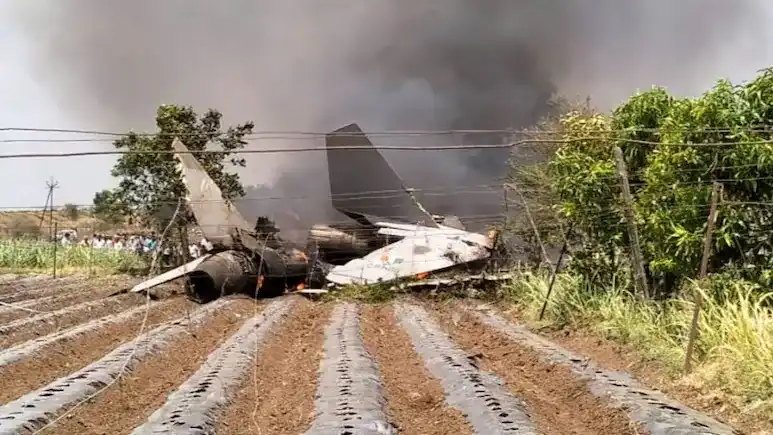
The ejection seat system played a pivotal role in ensuring the survival of the crew in this emergency. Without such advanced systems, the outcome could have been far worse, underlining the crucial role that ejection seats play in military aviation.
Advancements and Continuous Evolution of Ejection Seat Technology
The development of ejection seats has come a long way since their inception, and systems like the K-36DM continue to evolve. Ongoing research aims to further improve the safety, reliability, and comfort of the ejection process, as well as to enhance the survival rates of pilots during high-risk ejections.
Future developments in ejection seat technology may involve improved G-force management systems, better canopy jettisoning techniques, and enhanced parachute systems designed to facilitate even safer recoveries. These advancements will ensure that pilots flying the next generation of fighter jets remain as protected as possible.
Conclusion
The Su-30MKI ejection seat, specifically the NPP Zvezda K-36DM, is a marvel of engineering, designed to save lives when everything goes wrong. It provides the pilot with a crucial escape mechanism, enabling survival even in the most extreme circumstances. As the Su-30MKI continues to serve as a mainstay of the Indian Air Force, the ejection seat remains an indispensable part of the aircraft’s safety systems. Thanks to continuous advancements in technology, the K-36DM remains one of the safest and most effective ejection systems ever designed, ensuring that pilots can eject and survive even in the most dire of circumstances.
